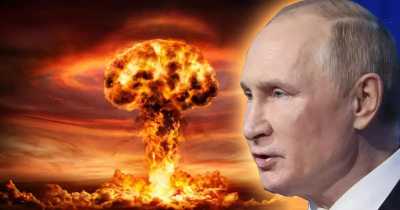Could Russia’s ‘Dead Hand’ Be a Myth? Separating Fact from Fiction
Russia Dead Hand, Dead Hand nuclear system, Perimeter system, Russian nuclear deterrent, Cold War weapons, Russian doomsday system, nuclear retaliation myth
Introduction
The name "Dead Hand" evokes images of a terrifying Cold War-era doomsday device: a fully automated nuclear retaliation system capable of launching a second strike even if Russia’s leadership is annihilated. Officially called Perimeter, this system is shrouded in mystery, speculation, and fear. But a question still lingers in the minds of military analysts, journalists, and the public alike: Could Russia's Dead Hand actually be a myth?
In this article, we explore the origins of the Dead Hand narrative, what is known from declassified sources, expert opinions, and why this Cold War relic may be more psychological deterrent than operational weapon.
What Is the Dead Hand?
Dead Hand (or “Perimeter” in Russian military terminology) is believed to be a semi-automated nuclear command-and-control system developed in the 1980s during the height of Cold War tensions between the U.S. and USSR.
According to reports, if certain conditions are met—like loss of communication with leadership or detection of a nuclear attack—Dead Hand can automatically launch a retaliatory strike using pre-programmed missile routes. This mechanism was supposedly meant to ensure that the Soviet Union could retaliate, even if decapitated by a first strike.
What Evidence Exists?
Here’s where things get complicated.
-
Declassified Soviet documents and Russian military officials have acknowledged the existence of the Perimeter system. Former Russian colonel Valery Yarynich and other insiders have publicly discussed its design.
-
However, many details remain highly classified, and much of what we know comes from interviews, second-hand accounts, or speculative Western intelligence analysis.
-
The U.S. Department of Defense has never officially confirmed that the system was fully automated or that it remains operational today.
So, is Dead Hand a real, functioning system? Or is it a Cold War-era bluff meant to instill fear?
Arguments That Dead Hand Could Be a Myth
-
No Confirmed Testing
There is no public evidence that the system has ever been tested end-to-end. Without testing, can it really be trusted to work? -
Strategic Redundancy
Russia already possesses robust nuclear triad capabilities—land, air, and sea—making such a system arguably unnecessary. -
Plausible Deniability and Psychological Warfare
The concept may have been created or exaggerated as a psychological deterrent—to make adversaries hesitate before considering a first strike. -
Technical Implausibility
Critics argue that the infrastructure required to monitor battlefield conditions in real time and make autonomous launch decisions would be incredibly complex and vulnerable to failure or false positives.
Counterarguments: Why Dead Hand Might Be Real
-
Cold War Mentality
Soviet military doctrine emphasized overwhelming retaliation. The development of a fail-safe system like Perimeter fits that strategic mindset. -
Insider Testimony
Multiple former Soviet officials have described its existence with consistent technical detail. This lends some credibility to the narrative. -
Modernization Claims
Some analysts suggest Russia has quietly maintained or updated the system in recent years, especially amid rising tensions with NATO.
Why It Matters in 2025
As geopolitical tensions simmer once again—whether over Ukraine, NATO expansion, or Arctic militarization—questions about Russia’s nuclear doctrine resurface. Whether or not Dead Hand is real, its myth continues to influence global security calculations.
If adversaries believe Russia has an automatic retaliation system, it strengthens Moscow’s nuclear deterrent, whether the system is functional or not.
Conclusion: Myth, Reality, or Strategic Ambiguity?
So, could Russia’s Dead Hand be a myth? The answer likely lies somewhere in between. While technical and strategic doubts cast a shadow over the system’s operational status, its symbolic power remains immense.
Whether or not it exists as described, Dead Hand has succeeded in its core mission: ensuring that no adversary feels confident enough to launch a first strike. And perhaps, in the high-stakes world of nuclear deterrence, belief is more powerful than proof.
SEO Tips for This Article
-
Use long-tail keywords like "Is Russia's Dead Hand real?" or "How does Russia's nuclear Perimeter system work?"
-
Include alt text and meta descriptions if embedding images (e.g., maps, Cold War timelines).
-
Share on Reddit threads, Quora, and X (Twitter) to attract Cold War enthusiasts and geopolitical audiences.
Sources:
-
Interviews with Valery Yarynich (from The New York Times and Wired)
-
Statements by Russian defense analysts
-
U.S. DoD public threat assessments

